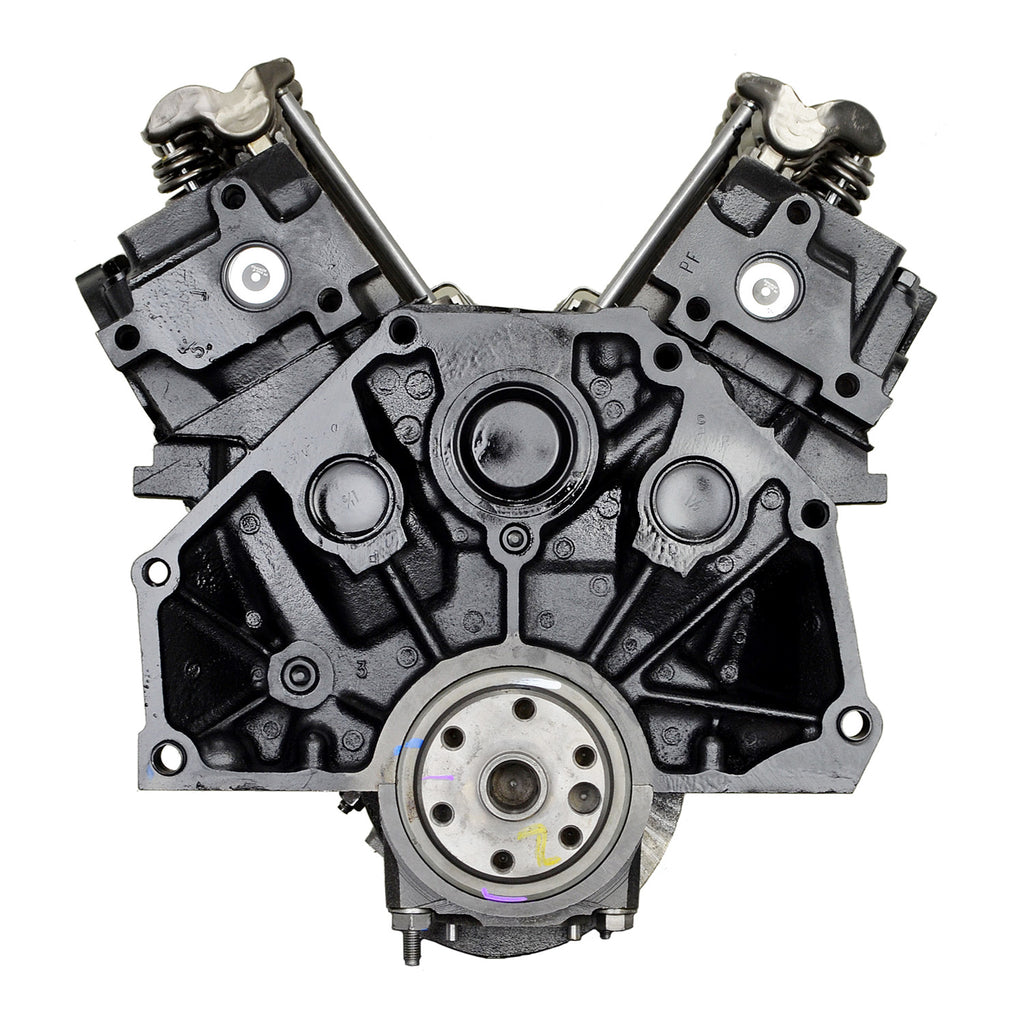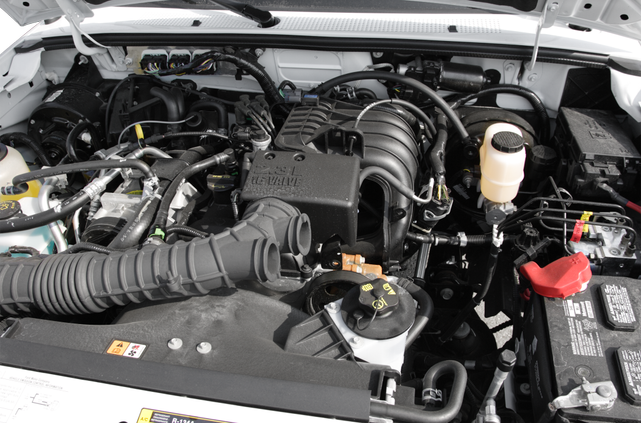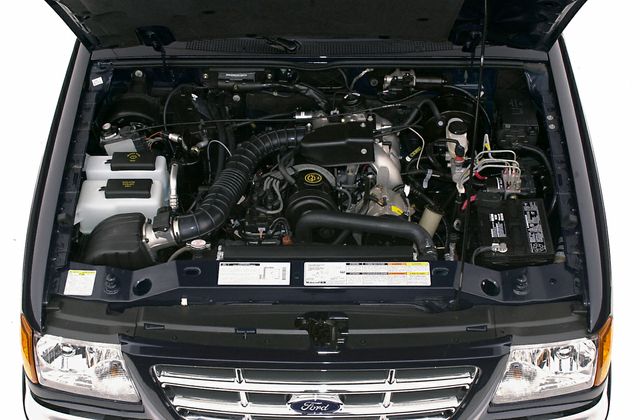How to Maintain and Optimize the 2.2 Ford Ranger Engine for Long-Lasting Performance
How to Maintain and Optimize the 2.2 Ford Ranger Engine for Long-Lasting Performance
Blog Article
Recognizing the Basics of Cars And Truck Engines: Kinds, functions, and functions

Introduction of Automobile Engines
A cars and truck engine serves as the heart of an automobile, converting gas into mechanical power to move it forward. This elaborate system comprises numerous elements that work in unison to ensure optimum efficiency and effectiveness. The basic operation of a vehicle engine involves the inner combustion procedure, in which fuel and air are blended, stired up, and eliminated to produce power.
The engine's design can dramatically affect its efficiency, fuel effectiveness, and discharges. Secret parts include the cylinder block, pistons, crankshaft, and camshaft, each playing a crucial duty in the engine's general feature. The cyndrical tube block houses the cyndrical tubes where combustion takes place, while the pistons transform the explosive energy from combustion into linear activity. This movement is then changed into rotational power by the crankshaft, enabling the lorry's wheels to transform.
Along with these elements, engines often use different systems such as gas injection, ignition, and cooling systems to enhance efficiency and long life. Comprehending the basic auto mechanics of automobile engines is important for detecting problems and carrying out maintenance, ultimately adding to the car's integrity and efficiency gradually.

Kinds of Car Engines
Cars and truck engines can be categorized right into several types based upon their layout, gas kind, and functional principles. 2.2 ford ranger engine. One of the most typical groups include internal combustion engines (ICE), electrical engines, and crossbreed engines
Inner burning engines, which can be additional separated right into gasoline and diesel motor, operate by igniting a fuel-air mix to produce power. Gas engines are typically lighter and smoother, while diesel engines are extra fuel-efficient and offer higher torque.
Electric engines utilize electric energy stored in batteries to power an electrical motor, offering instantaneous torque and zero emissions during operation. As innovation developments, electrical cars (EVs) are increasingly becoming preferred for their ecological advantages and reduced running costs.
Hybrid engines combine elements of both inner burning and electric engines, permitting for versatile source of power and enhanced fuel effectiveness. They can operate in numerous settings, utilizing either the gas engine, the electrical motor, or both simultaneously.
Each kind of engine has unique advantages and drawbacks, influencing their application in different automobile kinds and market segments, from portable cars and trucks to heavy-duty vehicles. Understanding these types is vital for making informed choices pertaining to vehicle option and efficiency assumptions.
Engine Functions Clarified
Recognizing engine functions is essential for grasping how automobiles operate effectively. At the core of any kind of interior burning engine lies the fundamental process of transforming fuel right into mechanical power. This procedure starts with the consumption stroke, where air and fuel are drawn into the combustion chamber. Following this, the compression stroke presses the air-fuel mix, enhancing its temperature level and pressure.
The ignition occurs next, sparking the combination and creating a fast growth of gases. This pressure drives the piston down during the power stroke, which eventually equates into the rotational motion of the crankshaft. The exhaust stroke after that gets rid of the invested gases from the chamber, making way for a brand-new cycle to begin.
Along with these key functions, engines also integrate systems that manage air conditioning and lubrication, ensuring optimal operational temperatures and reducing friction between moving parts. This detailed interaction of features enables the engine to produce the power essential for vehicle propulsion while keeping efficiency and reliability. Understanding these features gives useful understanding right into the intricacies of automotive design and boosts the capability to identify and attend try this out to engine-related problems successfully.
Key Engine Features
Engine design includes several crucial features that dramatically affect performance, durability, and performance. One of one of the most vital aspects is the engine configuration, that includes inline, V-type, and level styles. Each configuration influences the engine's size, power, and balance outcome, thus affecting overall lorry dynamics.
Another important feature is the engine displacement, describing the complete quantity of all cylinders. Bigger displacements generally produce even more power however might endanger gas effectiveness. Engine materials additionally play a pivotal role; high-strength and light-weight products, such as aluminum and magnesium alloys, boost performance without including excessive weight.
The sort of gas shot system used-- such as multi-port or straight shot-- influences combustion efficiency and discharges. Turbo charging and turbocharging are features that boost engine performance forcibly extra air right into the burning chamber, raising power outcome without significantly boosting engine size.
Finally, the presence of innovative engine monitoring systems maximizes fuel-air combination and ignition timing, adding to smoother operation and better gas economy. Collectively, these functions her latest blog specify an engine's capabilities, establishing the foundation for its performance and durability in a competitive automobile landscape.
Maintenance Tips for Engines
Correct engine upkeep is important for making certain optimum efficiency and durability, as disregarding regular treatment can bring about substantial issues down the line. To keep your engine properly, start with routine oil changes, usually every 3,000 to 7,500 miles, depending upon the sort of oil utilized. Fresh oil lubricates engine components, minimizing rubbing and wear.
Additionally, monitoring coolant degrees is important to stop getting too hot. Make sure that the coolant is covered up and is in good problem to maintain effective temperature level law. Frequently replace and evaluate air and gas filters, as clogged filters can impede air flow and fuel shipment, endangering engine effectiveness.
In addition, focus on stimulate plugs and ignition systems. Used or damaged ignition system can cause misfiring and reduced performance. Checking the battery terminals and links for deterioration is additionally necessary, as a weak battery can affect engine starting.

Conclusion
In recap, a comprehensive understanding of cars and truck engines incorporates various kinds, features, and essential features that considerably influence vehicle efficiency. Internal burning engines, along with electrical and hybrid options, show varied mechanisms for power conversion. 2.2 ford ranger engine. Recognizing the necessary features, such as consumption and exhaust cycles, together with important engine attributes like arrangement and fuel shot systems, equips auto owners with the knowledge necessary for effective maintenance and procedure, eventually boosting lorry longevity and efficiency
A car engine serves as the heart of a lorry, transforming gas right into mechanical energy to push it onward. The basic operation of an automobile engine entails the inner combustion procedure, where fuel and air are mixed, ignited, and removed to create power.
Frequently examine and replace air and gas filters, as clogged filters can hinder air movement and gas distribution, jeopardizing engine performance. - 2.2 ford ranger engine
In summary, a thorough understanding of auto engines encompasses numerous kinds, functions, and crucial attributes that considerably affect lorry performance. Recognizing the vital functions, such as consumption and exhaust cycles, along with important engine features like configuration and gas injection systems, furnishes cars and truck owners with the understanding essential click here for more info for reliable maintenance and operation, inevitably improving automobile longevity and performance.
Report this page